Metal Mascots
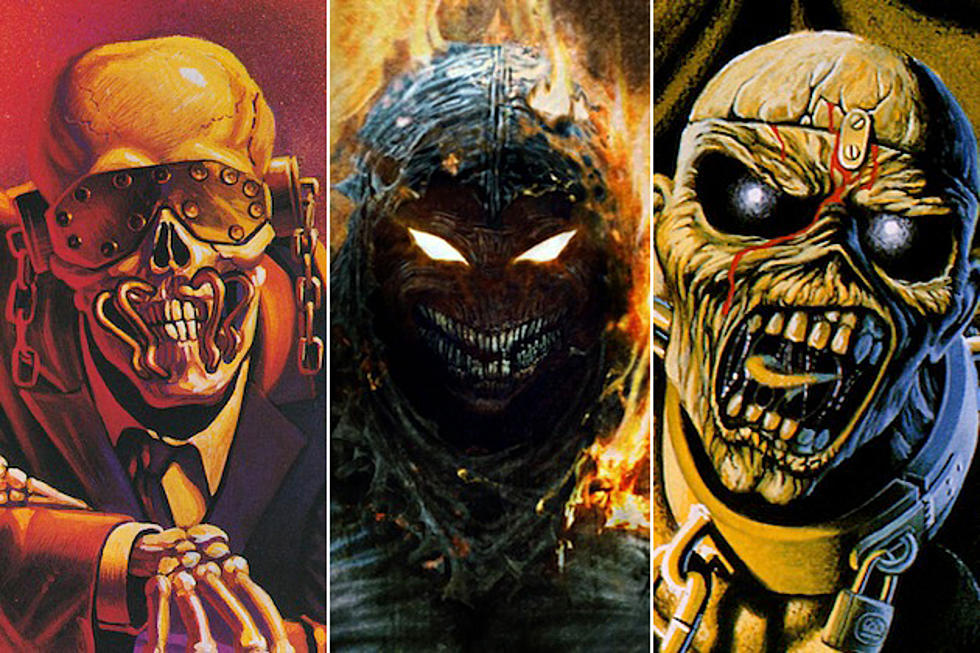

I was organizing my band’s tee shirt drawer, and the Iron Maiden pile, full of tee shirts with Eddie’s images according to the theme of each album, made me smile and think about the creation of this character, about “Eddie’s birth”, and I felt compelled to write this article.
There are certainly other articles and videos about the theme, but I wanted to bring my personal view of our beloved creatures.
When you stop to think about how the Metal world is so rich in fantasy and creativity and how it goes way beyond the music.
We could also talk about many forms of expression like illustrations, stories, the theatrical dark atmosphere, and even fashion, with Judas Priest leather and metal spikes invading not only the BDSM scene but also fashion catwalks around the world.
The theatrical masks like those used by Slipknot, who create sensation each time a new one is released, and Ghost or Kiss, who kept their identity hidden behind the makeup and stage outfits for several years, entertaining the mystery about band members’ identity.
We also have Vikings, bestial warriors, and even Aliens taking part in the scene.
Powerful images and themes illustrate lyrics that are like a mirror of the band’s imagination and creative minds.
Heavy Metal can be like an escape from reality for a significant number of people towards fantasy worlds, going from Pirates to Dragons, knights and Realms (from all the Power, Pagan and Folk Metal songs) to Goth, Satanic, darker themes from Doom and Black Metal.
It is an electrifying world, and much art and creative talent is involved.
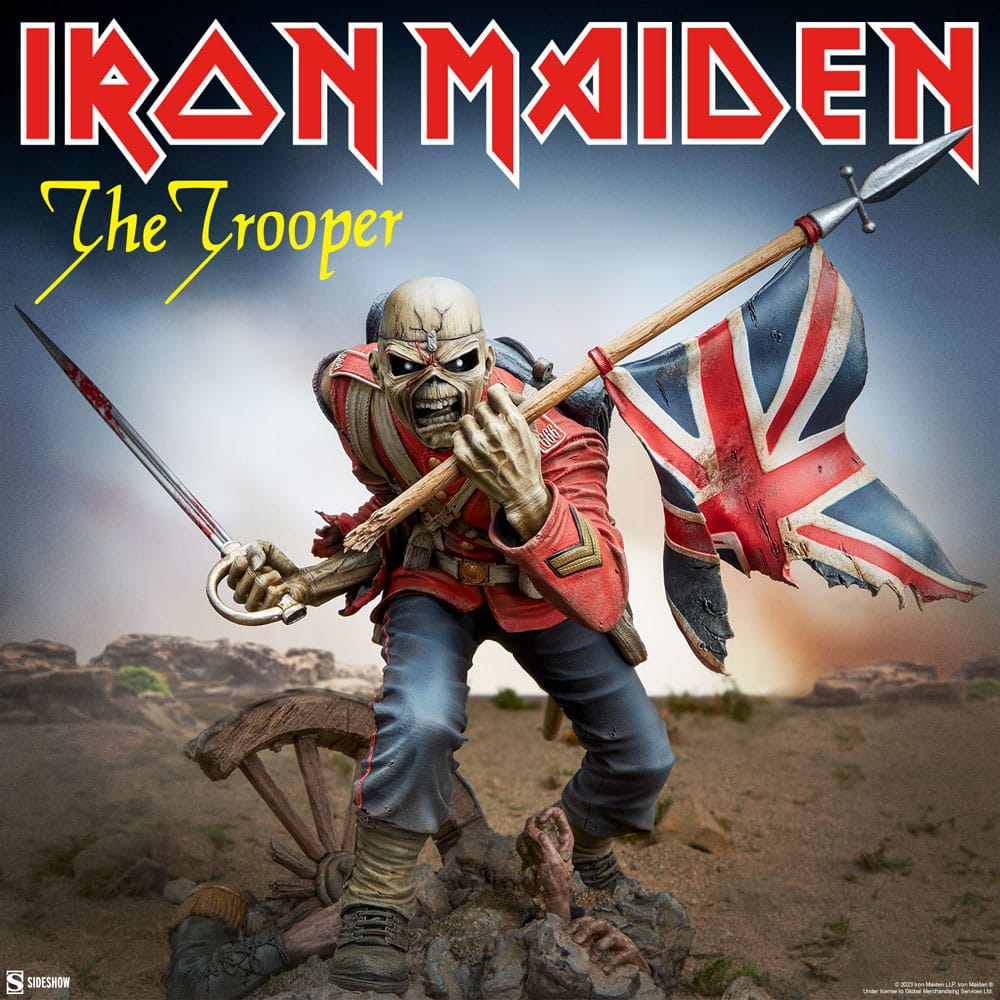
Today, I am talking about Metal Mascots.
Characters like Eddie and Vic Rattlehead from Megadeth or Chaly the Bat from Overkill evoke the band effortlessly just with their image.
Eddie can be recognised even by “normies” (non-metalheads) since he is in every Iron Maiden album and tee shirt.
While some Metal mascots are constantly present in almost every group-related image, others lurk in the background, patiently waiting for the ideal opportunity to emerge, like Metallica’s “Scary Guy”.
I will start with the one I like the most: Children of Bodom Reaper, jokingly named “Roy”.

He is in every Album cover apart from “Are You Dead Yet” and “Blooddrunk”, where you only see him partially with his hand or the Scythe.
He was called “The Grim Reaper” to start, but later, they gave him the name “Roy”. Alexi explained where the name comes from, but you need to know the movie “Hot Shots” released in 1991, a Top Gun parody, to understand it. “There’s a guy named Admiral Benson in the movie Hot Shots,” Alexi clarified: He calls, “Roy. Roy” as he peers into a painting under the impression that he is looking out of a window and remarks, “They’re out there doing nothing. I’ve been ignored by the dude all day.”
Also, I find it interesting how Roy is represented in vivid colours in each album, making the scary Reaper look spirited, inviting and nearly welcoming, like in the cover of “Something Wild” or “Hatebreeder”. You don’t see the gloomy, dark presence of the Reaper but more like the sort of Reaper you may encounter during a “gone wrong acid trip” or heavy alcohol intoxication, I suppose.
Roy also appears in video clips like “Every Time I Die”, where Alexi is tied up, and the Reaper comes and goes.
Among the “Hatecrew” (COB fans), Roy is there to remind us life is short since COB lovers tend to be “wild children” who enjoy living life to its fullest. I can tell this because I am on board with this crew (I adore Alexi and the COB), and I see Roy precisely this way. To others with a darker approach to life, the Reaper may represent a sort of “welcoming release”, but either way, Roy is there to remind us he will eventually do his job.
Iron Maiden’s Eddie
Since the early 1980s, Eddie the Head, the band’s adored and dynamic mascot, has appeared on many Iron Maiden artwork and merch. Additionally, he consistently appears at Iron Maiden live performances. The most well-known mascot in Heavy Metal history is, without a doubt, Eddie.
Eddie became like a Metal Ambassador, recruiting new “souls” to the “cause” since the number of Metalheads who were introduced to Metal by listening to Maiden is huge. Iron Maiden is like a common agreement among Metalheads from any Metal Genre; we all love Maiden and Eddie.
How did Eddie become the Head?
The original Eddie the Head was a papier-mâché mask made by Dave “Lights” Beazley, the lighting and pyrotechnics man for Iron Maiden. Eddie quickly changed into a bigger fibreglass head with laser eyes and a mouth that could breathe dry ice.

The band’s longtime manager, Rod Smallwood, brought in musician Derek Riggs to create Eddie the Head for Iron Maiden’s 1980 self-titled debut album.
Riggs first brought Eddie into proper view on Iron Maiden’s “Running Free” single, where he appears as a shadowy figure. Eddie is fashioned as a punk-edged rocker.
To better reflect Maiden’s persona and style, Riggs increased the amount of hair in the original artwork at the band’s request.
The drawing was originally intended for use on a punk album by Riggs, who was inspired by a picture of a Japanese soldier’s head on a U.S. tank.
In February 1980, Eddie the Head debuted on Iron Maiden’s first song, “Running Free.” To create a mysterious atmosphere before the publication of the album “Iron Maiden, two months later, the artist Derek Riggs hid Eddies’s face.
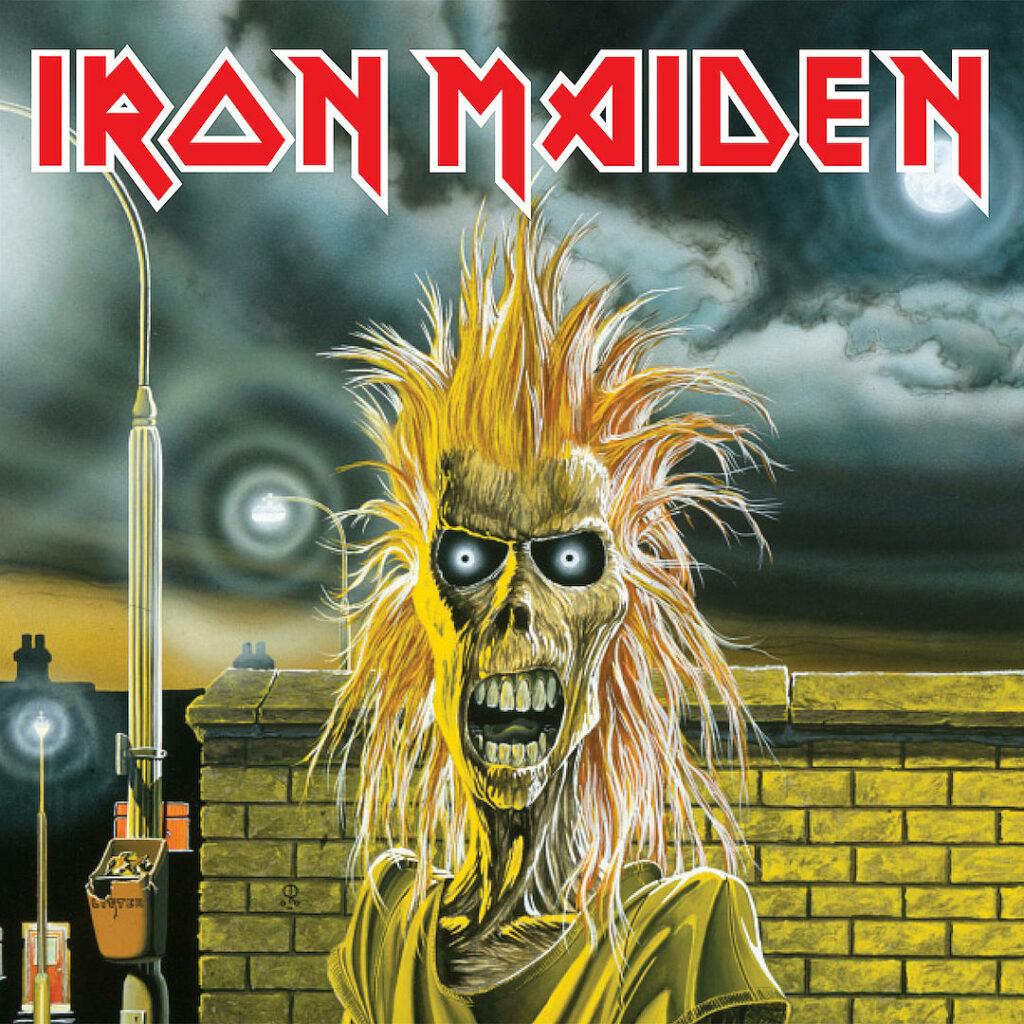
“Iron Maiden” – Eddie’s appropriate horrorshow persona was revealed when the album arrived in bookstores in April 1980. The original sketch, which Riggs did in late 1979 and added hair to make Eddie appear more metal, is the basis for the picture.
Eddie caused a stir when he appeared on the ‘Sanctuary’ single cover in May 1980, brandishing a knife, towering over the lifeless body of British Prime Minister Margaret Thatcher.

With “Women In Uniform,” Iron Maiden’s third single, Thatcher takes her revenge on Eddie. The PM, holding a machine gun and dressed in full army uniform, is waiting for Eddie, whom two women entertain.
Every single Maiden Album has Eddie featured in accord with the album or single title.
In 1993, with tensions running high within Maiden, Bruce Dickinson left the group to concentrate on his solo endeavours. Two months later, the cover of Maiden’s 1982 anthem, performed live, features a cheeky farewell shot of a demon Eddie impaling the frontman with a massive spear.
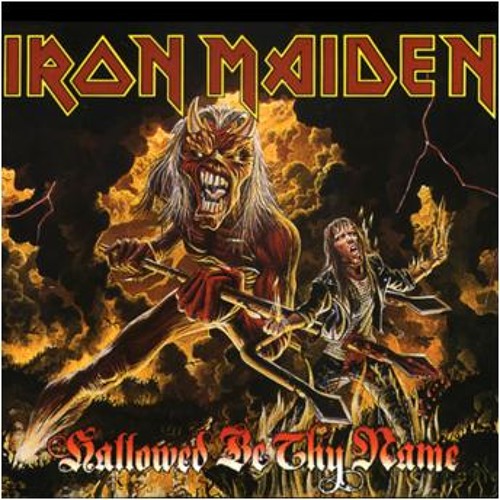
Eddie was turned into a living embodiment of The Wicker Man by artist Mark Wilkinson, who was heavily influenced by the cult horror movie of the same name.
Eddie is like a band member and takes a big place in the band and the hearts of Maiden’s fans. We love him.
There is much more to be said in terms of how each album cover shows Eddie according to the album theme, but you can watch a video below about the subject.
Megadeth’s Vic Rattlehead
Megadeth created one of the most adored heavy metal mascots: Vic Rattlehead. Dave Mustaine invented the character, and his appearance represents censorship and a lack of free will. Vic’s facial design bares homage to the three wise monkeys, with his eyes being covered by a bolted-on slate (see no evil), clamps being placed around where his ears would be (hear no evil), and his mouth being stapled shut (speak no evil).
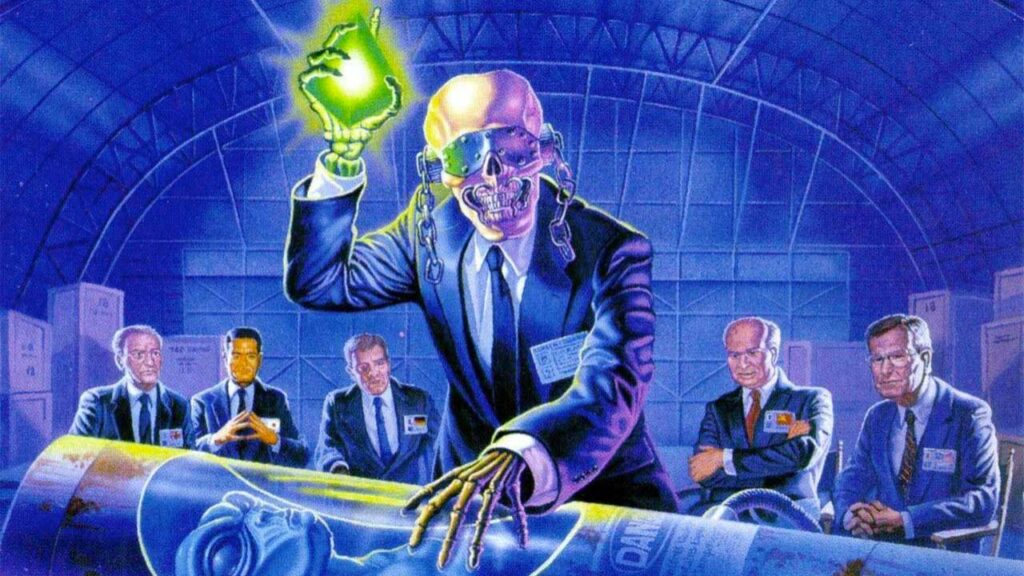
Vic Rattlehead appears on hits like “Killing Is My Business… and Business Is Good!,” “Peace Sells… But Who’s Buying?,” “Rust in Peace,” and many more Megadeth album covers.
Vic is an acronym for “victim,” Rattlehead refers to Mustaine’s mother’s warning, “Don’t do that or you’ll rattle something loose up there,” to him when he was headbanging. After that, the phrase “to rattle one’s head” (which means “head-bang”) was created.
Vic is not quite a villain; he is more like an undead activist on a never-ending journey to take down every corrupt politician.
A biography tells his story and how he became a sort of avenger fighting against a corrupted government. His story is featured in many of Megadeth’s songs. Despite being evil with corrupt humans, Vic does show love towards kids, and he was once a father before his family was murdered, according to his “biography” invented by Mustaine.
Mustaine, by the way, accords great importance to Vic, and there were in the past many problems related to Vic’s appearance and looks on album covers, and Mustaine truly uses Vic’s struggles and story in the lyrics of his songs.
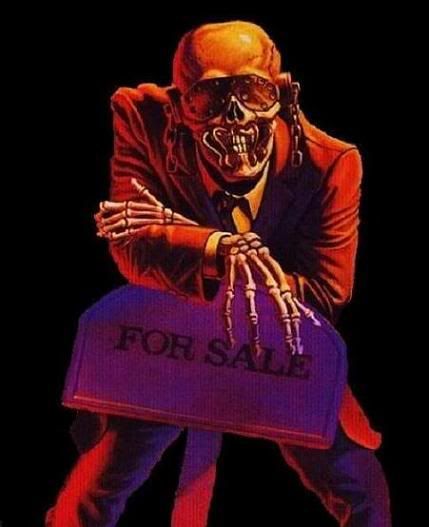
Vic Rattlehead is a powerful presence on Megadeth songs and Merch, and he is one of the most well-known Mascots on the Metal scene.
In Flames Jesterhead
Jesterhead appeared while creating the album Jester Race by In Flames in 1996. It is an album about humanity destroying itself. Anders Friden and Niklas Sundin created the diamond-faced mascot. Jesterhead has been featured on several In Flames album covers, printed on band merch, mentioned in songs, and displayed as part of banners while performing live.

“Jesterhead” also became a term which die-hard In Flames fans call themselves in the same way as Slipknot fans call themselves “Maggots”.
After its creation, it didn’t take long for Jesterhead to appear on album covers and take various forms according to its theme.
For example, a Jesterhead mask was released with the album “I the Mask”. Anders said during an interview about the release of the album “I, The Mask”. “We all carry masks. You, I, you people out there. We all do for certain situations. There are very few people that are always themselves, all the time. We adapt ourselves to the people around us, to the situation around us. We carry those masks and do not show our true inner selves.”
With the album I, The Mask,” for the first time, we see the Jester character with a body and an agency of his own.
The story of the Jesterboy is one of a young child who attempts to exact revenge on his abusive father by setting him on fire. When the blaze spreads to his entire home and claims his brother’s life as well, he dons the mask and begins his journey alone with the opening track, “Voices.”
Last spring, the iconic mascot Jesterhead came to life in a new graphic novel titled In Flames: The Jester’s Curse and a limited edition “Clock Maker” limited edition action figure from Z2 Comics.
Created and sculpted by Blake Armstrong and based on Jesterhead’s appearance on In Flames’ upcoming album Forgone (released by Nuclear Blast on February 10th), the “Clock Maker” Jesterhead figure was also released in the spring of 2023, along with the new graphic novel, which was written by Armstrong, Ben Laverock, and Scott Bramble, and features artwork by Scott Dewey and Armstrong.
We are preparing a second part of this article with Murray, Dio’s demon, Chaly the Overkill bat and many other Metal Mascosts.
Vic and Jesterhead are both present in the video game released by Iron Maiden.
You can watch a video about Vic here on YouTube
You can watch a video about Eddie here on YouTube
